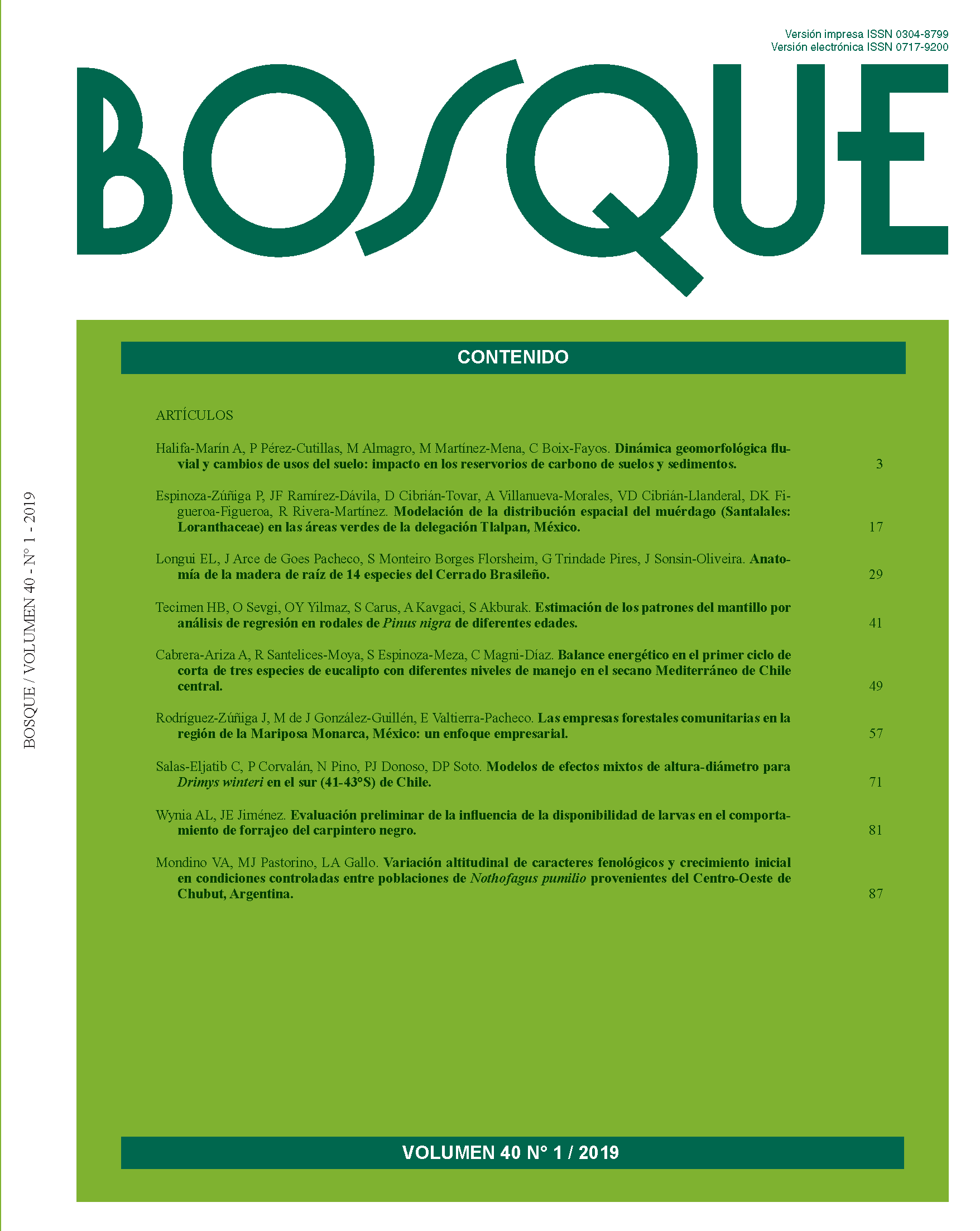Anatomía de la madera de raíz de 14 especies del Cerrado Brasileño
Contenido principal del artículo
Resumen
Los estudios sobre la anatomía de la madera de raíz son escasos, principalmente por la falta de interés comercial y la dificultad de recolección. En el Cerrado brasileño, los artesanos locales utilizan la madera de raíz para la marquetería, la fabricación de objetos pequeños como pantallas de lámparas o adornos, y la base de la mesa. Sin embargo, la taxonomía basada en la madera de raíz puede servir como una guía para la conservación y el manejo de las reservas de árboles en entornos urbanos. Por lo tanto, se describió la anatomía de la raíz de la madera de 14 especies de árboles que se encuentran en el Cerrado brasileño.
Se estudiaron muestras de la raíz principal, a una profundidad de aproximadamente 20 cm, de 37 árboles de 5 a 10 años. Los procedimientos anatómicos siguieron las técnicas estándar para la preparación y el análisis de muestras de madera. Se utilizaron muestras de tallo o rama de otros estudios para llevar a cabo la descripción anatómica y la comparación. Sin embargo, se encontraron algunos problemas, tales como: los anillos de crecimiento difíciles de distinguir; además, era problemático procesar la muestra y, en algunos casos, describirla dado que la cantidad, distribución y tipo de parénquima axial difería sustancialmente de la del tallo principal. No obstante, se encontró una variación en la presencia/ausencia de fibras septadas entre las muestras, y también diferencias en la composición de los radios.

